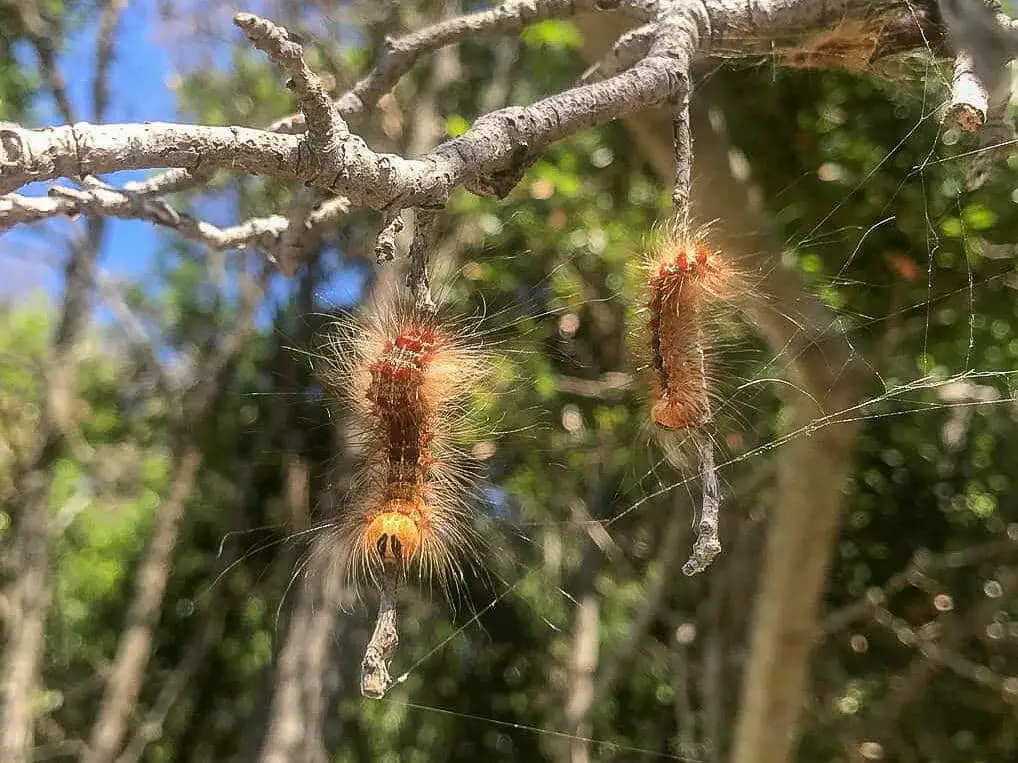The rather harmless caterpillars do not pose any danger, as the German Entomological Institute Müncheberg reported on SeaHelp’s request. However, the situation is different with the pine processionary moth, which also occur in the region. When the small hairs of the pine processionary moth touch the skin, a highly effective nettle poison is transmitted, which causes a strong burning sensation on the skin. The hairs are equipped with small barbs which immediately stick to the skin upon contact. They can be transmitted not only by touch, but also by wind. In the worst case, they settle in the airways and can cause severe allergic reactions with fever and asthma. Neither humans nor animals should come into contact with the pine processionary moth. If there has been any contact, there is a risk of so-called “caterpillar dermatitis”. In case of a strong, burning infestation, a doctor should be consulted in any case. The symptoms of the pine processionary moth allergy: reddening of the skin, itching and painful skin areas, swelling of the mucous membranes, shortness of breath, wheals. However, this list does not claim to be exhaustive; in individual cases other symptoms may also develop. If there is the slightest doubt, we recommend in any case that you contact a doctor. By the way: The “relatives” of the pine processionary moth, the pine processionary moth, are currently making trouble in parts of Vienna, Düsseldorf and Frankfurt.
However, there are no reasons to change his holiday behaviour because of the caterpillar plague, because the haunting ends as quickly as it occurs. To be precise, when the caterpillar of the gypsy moth has eaten its way through the woods and – similar to the children’s book – turns into a beautiful butterfly. However, one may be divided on the term “beauty” with regard to the rather grey butterfly. According to an expert from the Institute, it becomes critical once again when the females of the hatched butterflies are mainly at night in search of suitable places to lay their eggs. Here they could be attracted by the lights of the big cities, but also by the lights of the illuminated boats and once again become a plague.
In the case of the gypsy moth, by the way, nature regulates the population itself; the call for lethal injection is not only superfluous, but counterproductive. Nature protects itself by attacking the caterpillars with parasites when the gypsy moth population spreads. These parasites multiply even faster than the caterpillars themselves and destroy them. If humans artificially interfere with this cycle with poison, parts of the caterpillar population will also destroy the parasites and new caterpillars will grow, so that such an intervention in nature has rather the opposite effect.
In the end, the skippers have only one thing left to do: give way to the phenomenon, find other anchorages and wait patiently until the haunting is over. Nature almost always recovers on its own after clear cutting, which is reminiscent of forest dieback, as long as there is no human intervention.
6












